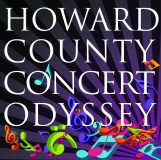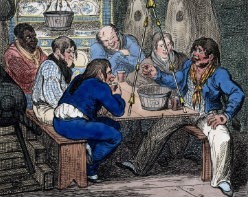Did you know that Americans have a rich history of providing a musical accompaniment to the sea?
Back in 1798, two musicians boarded the USS Ganges — a fifer and a drummer — and that was just the start. The fife-drummer duo was used throughout the Revolutionary War. Having musicians on ships grew in popularity, and within 30 years, the USS Constitution had a 20-piece band. Yo ho ho!
Another landmark moment was the founding of the Navy School of Music in 1935. But it wasn’t until 1956 that the U.S. Navy Sea Chanters were officially established. This group became highly regarded and has performed at a number of high-profile events, including presidential funerals. They even performed in West Berlin during the Cold War. (Don’t miss their free performance with us on September 22!)
Today you’ll find the U.S. Navy Sea Chanters performing a wide variety of music, including (of course), sea chanties.
Though the golden age of chanties was the mid-1800s, these folkloric ditties are still surprisingly popular. Perhaps we long for the simpler melodies of bygone days. Or maybe the SpongeBob SquarePants theme got lodged in our brains and can’t be levered out.
Whatever the reason, sea chanties are still very much with us and have an entertaining history all their own.
Sea chanties were work songs first and foremost, used to help seamen coordinate hoisting the sails, heaving ropes, and moving cargo. Though many chanties originated in Europe, America does have some of its own. The ones developed in California, for instance, include references to Cape Horn and the gold rush.
Surprisingly, they were sung on commercial ships rather than Naval ships, which had larger crews and didn’t need to try so hard to coordinate efforts. But we’re grateful that the U.S. Navy Sea Chanters will celebrate them with us anyway!

